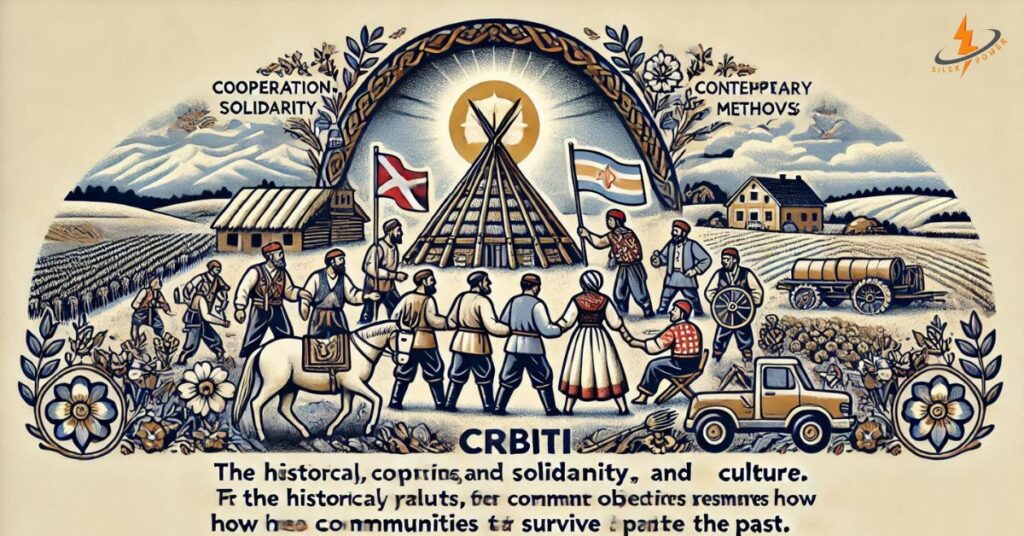Introduction To Çrbiti
The idea of Çrb emphasizes cooperation, solidarity, and culture. It demonstrates how customs and contemporary methods can coexist peacefully. With its historical roots, Çrb symbolizes the value of cooperating to achieve common objectives. It places a strong emphasis on cultural continuity, connection, and respect.
For communities to survive and prosper in the past, cooperation was essential. They worked together on tasks like construction, farming, and festivities. Strong ties and enduring traditions were established as a result of this cooperative mentality. Though they changed over time, these customs remained centered on solidarity and common principles.
In both urban and rural locations, Çrb continues to foster social ties today. It maintains its cultural roots while adjusting to contemporary difficulties. It acts as a reminder that tradition need not be sacrificed for change. Rather, it demonstrates how integrating the old with the new can strengthen communities.
Origins and Evolution of Çrbiti
Tracing the Roots: Where It All Began
Çrb came from early communities where cooperation was essential to life. Communities cooperated to build houses, grow crops, and defend one another. These behaviors established the groundwork for virtues like respect and collaboration.
Cultural Milestones in Çrbiti’s History
Celebrations, festivals, and rituals that strengthened solidarity are important turning points in Çrb’s history. The fundamentals of Çrb were upheld as it changed over the years.
How Çrbiti Shaped Early Communities
In order to share resources and duties, early communities relied on Çrb. Their social systems were molded by it, becoming more cohesive and robust.
Philosophy and Meaning Behind Çrbiti
Core Principles: Unity, Respect, and Harmony
Harmony, unity, and respect are important to Çrb. By teaching people to put the good of the community before their own interests, it helps to build a harmonious society.
The Symbolism of Çrbiti in Community Life
Çrb represents power via cooperation. It stands for the notion that when people cooperate and show respect for one another, communities prosper.
Lessons from Çrbiti: What It Teaches Us Today
Çrb serves as an inspiration for contemporary communities to value cultural legacy, cooperation, and respect for one another. It serves as a reminder that stability and growth can result from unity.
Traditional Practices of Çrbiti
Rituals and Celebrations That Reflect Çrbiti Values
Çrb’s emphasis on unity is emphasized through traditional festivals and ceremonies. Cooperation is celebrated at gatherings like communal feasts and harvest festivals.
Communal Activities: Sharing Responsibilities and Rewards
Çrbi’s emphasis on mutual assistance and shared responsibility is reflected in activities like building homes, cultivating crops, and planning festivals.
Oral Traditions: Passing Down Values Through Stories
To ensure that Çrb values are maintained and transmitted over generations, they have been taught through stories, songs, and proverbs.
Çrbiti and Its Modern-Day Relevance
How Çrbiti Continues to Shape Urban Lifestyles
By means of neighborhood associations, volunteer organizations, and team-based initiatives, contemporary urban communities implement Çrb ideas.
Modern Applications: Blending Tradition with Innovation
By fusing tradition with contemporary tactics, Çrb values can be seen in social projects, educational programs, and corporate collaboration.
Reinventing Çrbiti for the Digital Age
Çrb has discovered new ways to express itself in the digital age through social media groups, internet platforms, and virtual collaborations.
Çrbiti’s Impact on Social Structures
Building Stronger Communities Through Collaboration
By encouraging cooperation, Çrb strengthens ties. It motivates people to cooperate in order to achieve shared objectives.
Promoting Inclusivity and Equality in Society
Assuring that everyone in a community has a voice and fair opportunity, its ideals foster inclusion.
Strengthening Family and Neighborhood Ties
Through communal festivities and events, Çrb enhances ties throughout the community and within families.
Economic and Educational Influence of Çrbiti
Fostering Cooperation in Work and Trade
When fair trade, collaboration, and shared success are guided by Çrb values, businesses and marketplaces flourish.
Encouraging Teamwork in Education Systems
By promoting teamwork, reciprocal learning, and group projects, schools incorporate Çrb ideals.
Leadership Inspired by Çrbiti Principles
Leaders that embrace the Çrb principles prioritize equity, collaboration, and long-term community advantages.
Challenges and Preservation Efforts
Threats to Çrbiti: Globalization and Cultural Erosion
Çrb preservation is challenged by modernization and globalization. Maintaining its values requires work.
Efforts to Keep Çrbiti Alive in Modern Times
To maintain and advance Çrb values, communities host festivals, workshops, and educational initiatives.
Revitalizing Traditions Through Festivals and Awareness
People can rediscover Çrb customs through cultural festivals and awareness-raising initiatives.
Çrbiti’s Role in Conflict Resolution
Mediating Disputes with Unity and Respect
By highlighting cooperation and respect, Çrb principles encourage amicable dispute resolution.
Lessons in Negotiation and Problem-Solving
It imparts problem-solving and negotiation skills that are founded on equity and communication.
Fostering Peace and Stability in Communities
By encouraging empathy and understanding, Çrb helps to ensure enduring peace and stability.
Çrbiti’s Global Influence and Future Outlook
Çrbiti as a Global Model for Unity and Cooperation
Global movements emphasizing equality, cooperation, and shared responsibility are influenced by Çrb’s ideals.
Cultural Exchange and Global Adaptations of Çrbiti
Its ideas have been adopted all around the world, encouraging cooperation and cross-cultural interchange.
What Lies Ahead: The Future of Çrbiti in a Changing World
Çrb continues to be relevant as societies change, providing a paradigm for peace, unity, and sustainability.
Conclusion
Çrb stands for respect, solidarity, and cultural continuity. It emphasizes collaboration and support amongst one another while fusing tradition and contemporary principles. Its ageless values make it applicable in the rapidly evolving world of today, motivating people and communities to cooperate for a brighter future.



